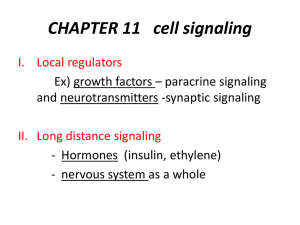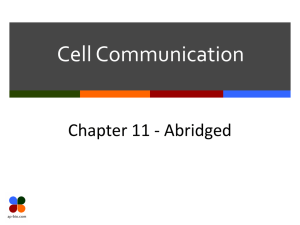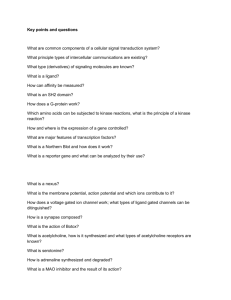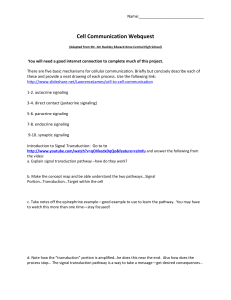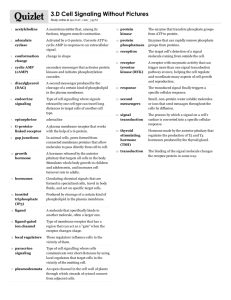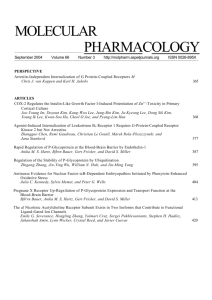AP Biology: Cell Communication Guided Reading Assignment
advertisement
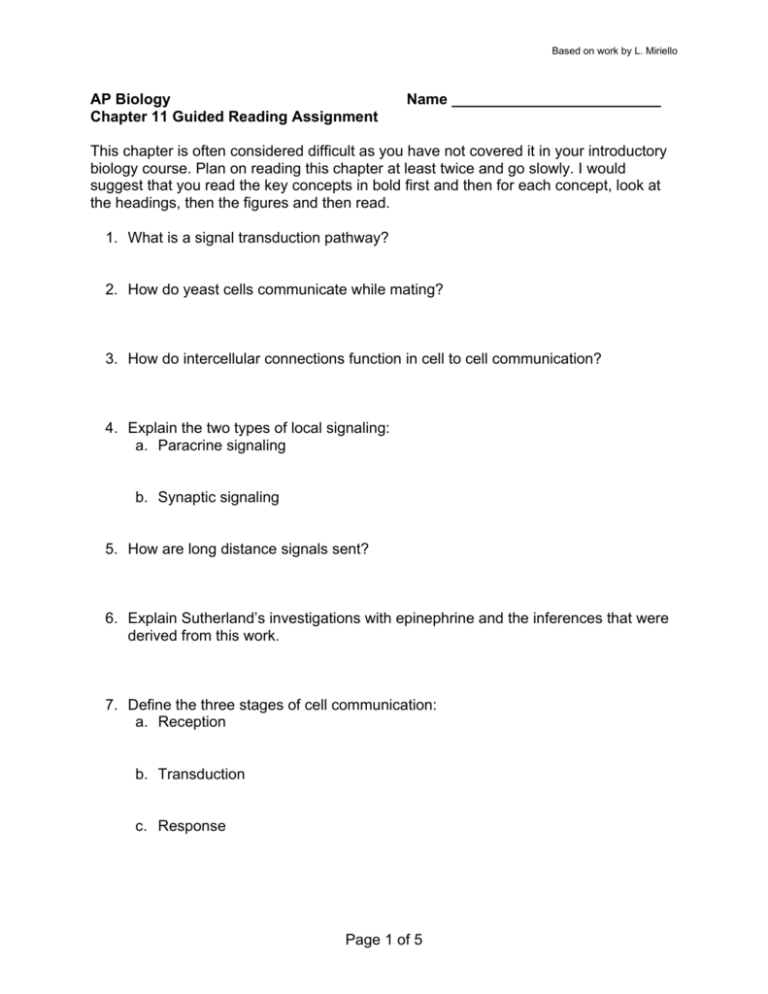
Based on work by L. Miriello AP Biology Chapter 11 Guided Reading Assignment Name _________________________ This chapter is often considered difficult as you have not covered it in your introductory biology course. Plan on reading this chapter at least twice and go slowly. I would suggest that you read the key concepts in bold first and then for each concept, look at the headings, then the figures and then read. 1. What is a signal transduction pathway? 2. How do yeast cells communicate while mating? 3. How do intercellular connections function in cell to cell communication? 4. Explain the two types of local signaling: a. Paracrine signaling b. Synaptic signaling 5. How are long distance signals sent? 6. Explain Sutherland’s investigations with epinephrine and the inferences that were derived from this work. 7. Define the three stages of cell communication: a. Reception b. Transduction c. Response Page 1 of 5 Based on work by L. Miriello 8. What is a ligand? 9. What is special about intracellular receptors – hint think of the structure of the cell membrane and how this relates? 10. Label the diagram below of a steroid interacting with an intracellular receptor. 11. Where would you expect most water soluble messengers to bind and why? 12. What is a G-protein-linked receptor? 13. The G-protein-linked receptor is located ___________________. When GDP is attached to the G protein the messenger is considered _______. GTP replaces GDP and now the messenger is considered _______. The G protein carrying the GTP leaves the receptor and _______ and enzyme which causes a cellular response. All of this is brought on by a _______ ________ attaching to the Gprotein-linked receptor and will shut down quickly when the ___________ ____________ is no longer there. Page 2 of 5 Based on work by L. Miriello 14. What is a kinase? 15. A tyrosine kinase receptor is different from a G-protein linked receptor in that it can trigger ______ _______ ______ pathway at the same time. When both ____________ ____________ are in their receptor sites, the molecules form a dimer – two molecules joined together. ATP is converted to ADP and the __________ gets attached to the tyrosine molecules. The addition of the _____________ causes a cascade of cellular responses. 16. Ligand gated means controlled by the _______ or signal molecule. If the door is closed, certain ____ are blocked from entering the cell. When the ___________ or signal molecule is attached, the door is open for certain _____ to enter the cell. These types of receptors are important in the __________ _____________. 17. What does conformation mean? 18. What is a signal transduction pathway? 19. Phosphorylation cascades are similar to a row of dominoes falling down, instead of one domino knocking down the next, a phosphate being added activates the message. In this way, a series of different _______ are each ___________ one after another. Inactive protein kinase 1 gets a _________ added and now it is _________ protein kinase 1. Active protein kinase 1 transfers a _______ and now inactive protein kinase 2 is now ________. This continues until the desired __________ is activated to cause a cellular response. 20. What are protein phosphatases and why are they so important? 21. What are second messengers and what are two characteristics of a second messenger? 22. What did Sutherland find in his experiments with regard to cyclic AMP and why is this important? Page 3 of 5 Based on work by L. Miriello 23. What is adenylyl cyclase? 24. Complete the diagram below of cAMP as second messenger: 25. How does cholera connect with the concepts of cell to cell communication? 26. How and why are the calcium concentrations kept different and separate comparing the endoplasmic reticulum, mitochondria and cytoplasm? 27. Label the diagram below showing calcium and IP3 in a cell. Page 4 of 5 Based on work by L. Miriello 28. How is signal amplification accomplished in the cell? 29. How is specificity accomplished in cell signaling? 30. What is a scaffolding protein and why is it important? 31. How is termination of a signal accomplished and why is it so important that termination be accomplished? Page 5 of 5
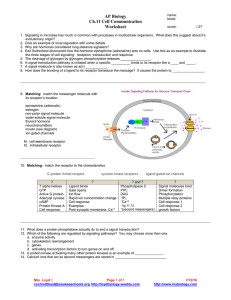
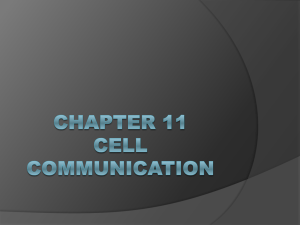

![Anti-VEGF Receptor 1 antibody [AP-MAB0702] ab56300 Product datasheet 2 References Overview](http://s2.studylib.net/store/data/012124206_1-d32314b990f15ec4dec65dd038b8f15c-300x300.png)

